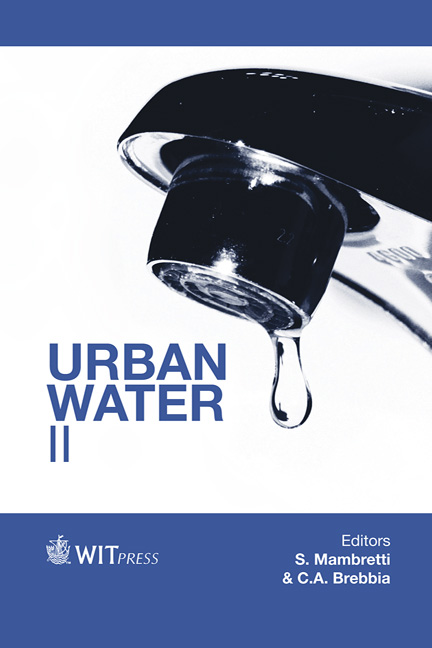On The Adsorption Of A Cationic Artificial Dye On Spent Tea Leaves
Price
Free (open access)
Transaction
Volume
139
Pages
11
Published
2014
Size
1,128 kb
Paper DOI
10.2495/UW140201
Copyright
WIT Press
Author(s)
S. Jung, M. Naidoo, S. Shairzai & A. E. Navarro
Abstract
Colored wastewaters are the most obvious contamination due to the very small amount of artificial dyes. Activated carbon and sludge are the conventional treatment technique for this contamination. This research proposed the alternative use of spent tea leaves of green tea (GT), decaffeinated green tea (DGT), peppermint (PM) and chamomile (CM). Batch equilibrium experiments were conducted at room temperature to determine the optimum conditions that maximize the removal of malachite green (MG) as a model dye. Results indicate that the adsorption is strongly driven by pH, reporting an optimum value at 6. For all the adsorbents, less than 150 mg of the tea leaves reached the maximum adsorption. The absence of salts and heavy metals also maximize the adsorption of MG. Isotherm models of Langmuir, Freundlich, Dubining-Radushkevich and Temkin were used to fit the data. Modeling indicates an adsorption trend of PM˃DGT˃GT˃CM and a maximum adsorption capacity of 69.7 mg of MG per gram of PM adsorbent. Finally, instrumental analysis such as scanning electron microscopy and infrared spectroscopy were used to characterize the physical and chemical properties of the adsorbents, demonstrating their good potential as adsorbents for the removal of MG from wastewaters. This study will promote further investigation on naturally-occurring biomaterials for their application on the decontamination of water resources. Keywords: adsorption, malachite green, spent tea leaves, isotherm, wastewater, scanning electron microscopy, infrared spectroscopy.
Keywords
adsorption, malachite green, spent tea leaves, isotherm, wastewater, scanning electron microscopy, infrared spectroscopy.





